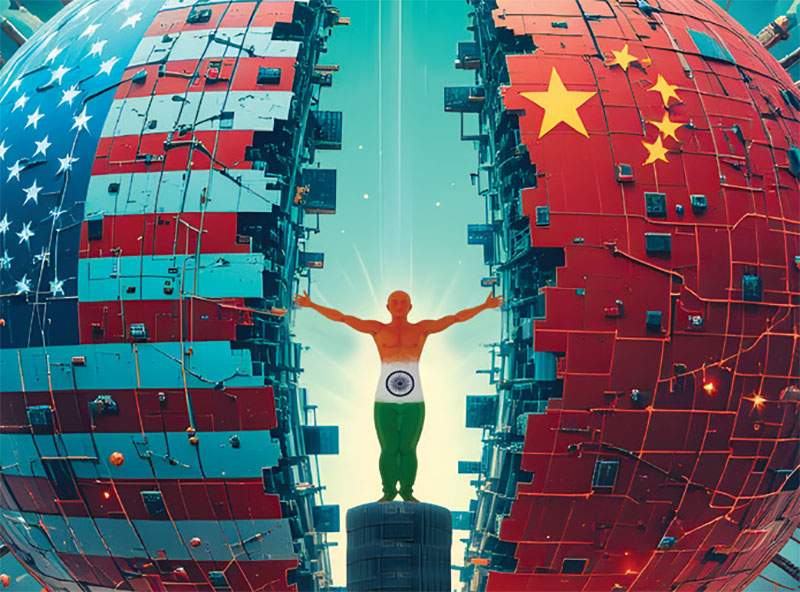Blitz Bureau
NEW DELHI: The US and China, once deeply interwoven in supply chains and digital ecosystems, are now disentangling at breakneck speed. Semiconductor bans, restrictions on artificial intelligence research, sanctions on telecom equipment, and data sovereignty concerns are creating two increasingly distinct technological spheres. For India, an aspiring digital power, the challenge is not just to choose sides but to find a viable pathway that secures its interests in both camps.
The US expects India to align with its efforts to curb China’s technological rise. Washington’s Chip 4 Alliance and restrictions on advanced semiconductor exports to Beijing are a case in point. India has been invited into conversations around supply chain resilience, particularly in semiconductors, critical minerals, and 5G / 6G standards. Simultaneously, US tech giants — Google, Apple, Microsoft, Amazon —remain deeply invested in India, making the country central to their long-term Asia strategy. In this sense, siding too closely with Beijing risks alienating the very firms that are shaping India’s digital economy.
Will have to play safe with both nations, for its own technological advancement
Yet the reality is more complex. China remains India’s largest source of electronics imports, from smartphones to networking gear. Despite border tensions, bilateral trade touched record levels last year, underscoring India’s dependence on Chinese components. Replacing these with local or Western alternatives will not happen overnight. Moreover, many Indian start-ups have relied on Chinese venture capital in their early years, complicating the picture further.
New Delhi’s strategy, therefore, has been one of calibrated pragmatism. On one hand, it has banned Chinese apps citing security concerns, tightened scrutiny on Chinese investments, and discouraged state-run telecoms from using Huawei or ZTE in critical networks.
On the other hand, it has refrained from a blanket decoupling, recognising that cutting ties abruptly would disrupt its own digital ambitions, including the Digital India programme and Make in India’s electronics manufacturing drive.
India is also pushing for technological self-reliance. The semiconductor mission, backed by multibillion-dollar incentives, is meant to ensure that critical chips are eventually manufactured onshore. Partnerships with Taiwan and the US in this area are aimed at reducing dependence on Chinese supply chains.
At the same time, India is championing digital public goods like the Unified Payments Interface (UPI), Aadhaar, and the Open Network for Digital Commerce (ONDC), which showcase a model distinct from both the American big-tech ecosystem and China’s state-controlled platforms.
For Indian businesses, the decoupling presents risks but also opportunities. Companies that can align with Western standards may gain preferential access to advanced technologies and global markets. At the same time, firms that master the art of navigating both ecosystems could find themselves uniquely positioned as intermediaries between East and West.
The bottom line is that India cannot afford a zero-sum choice. A rigid tilt towards Washington could raise costs and slow down its digital rollout; leaning too heavily on Beijing would compromise national security and geopolitical leverage. Navigating this balance requires agility, constant recalibration, and above all, confidence in India’s own digital model. In an age where technology defines power, India’s ability to chart a third way may determine not only its economic future but also its geopolitical standing.



